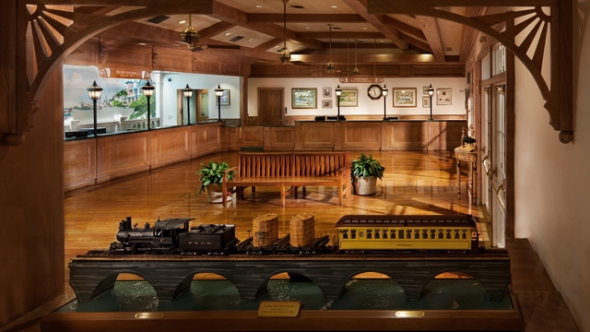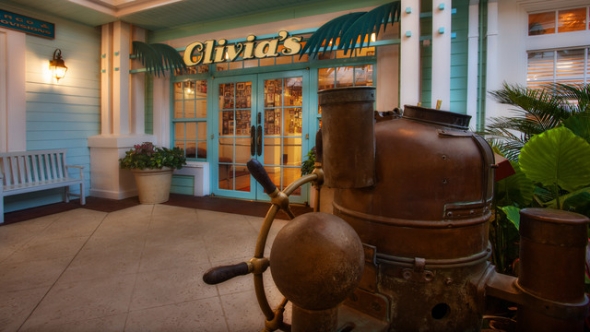The Mouse was all ears
Image: Disney
The presence of a major international conglomerate in the timeshare industry provided it with newfound credibility. While still largely unregulated by the American government, timeshares were becoming more reliable in the eyes of consumers. Disney watched with profound interest while Marriott’s reputation and business savvy almost single-handedly elevated timeshares to respectability.
A trio of other major advances in the industry added further incentive for Disney. The first one was the ratification of the Model Timeshare Act (MTA) in 1983. This legislation achieved two goals at once. It curtailed the ability of scam artists to function without repercussions, and it added straightforward laws that eased the restrictions on reputable developers to build timeshares. The MTA also directly led to the formation of ARDA-Florida.
The other important timeshare enhancements were the introduction of the concepts of fractional ownership and floating time. Fractional ownership only indirectly impacted Disney since DVC doesn’t employ the practice. It’s a buyer program wherein the customer acquires ownership of somewhere between a month and a quarter of an entire year. People who possess fractional timeshares enjoy exponentially better amenities. What’s important about fractionals is that they boosted customer satisfaction to unprecedented heights for the timeshare industry, a field that had historically claimed dreadful scores in this category. Fractionals elevated the reputation of timeshares even more, causing the industry to seem that much more attractive to Disney.
Floating time is a staple of timeshares today, but it was revolutionary in the 1980s. It’s when you own an indefinite week during a certain season of the year. For example, people who own a timeshare at a ski resort would find it much less valuable in July than in January. So, they can pick winter ownership, which will obviously cost more since it’s more in demand. They don’t have a set week during the winter, though. Instead, that’ll change from year to year depending on when the timeshare owner wants to enjoy a week of vacation. The season doesn’t change, but the floating time includes several weeks, one of which should satisfy the customer.
Conversely, bargain hunters can purchase offseason ownership for less money. Then, they can either enjoy a relatively empty resort during this down period on the calendar, or they can exchange their “points” to stay at a different condominium for a shorter period of time during their peak season. That’s the benefit of resorts participating in the RCI program. They garner additional benefits beyond their ownership location.
The above is the strict definition of floating time ownership. In execution, most timeshare systems provide owners with the ability to stay at any point during the year. Anyone who possesses an ownership interest in the property can stay for a week during the year. The only caveat is that the resort must have availability when the owner wants to stay. Timeshares do sell out, just like any other hotel or condominium.
People are always keeping score
Image: Disney
Notably, the floating time concept originally didn’t include points. That premise came later, and it’s crucial to the discussion since it’s the backbone of the Disney Vacation Club. Over time, timeshare strategists deduced something obvious from the above. Since some resorts such as those in Hawaii are in greater demand than, say, timeshares in Pigeon Forge, Tennessee, the vested interest isn’t the same. Similarly, selling a floating time week isn’t always effective for the reason above. Virtually everywhere in the world, a resort has a high season and a down season. Weeks during the former timeframe are much more valuable.
That’s where the idea of points comes into play. Since 70 percent of all timeshares are floating time in structure, it’s imperative that every customer feels satisfied. The people who pay the same amount but get less for their money become unhappy over time. That’s why the format gradually evolved from weeks to points. In this manner, everyone can keep score of what they own as well as what it’s worth. Everyone understands that summer months and national holidays are in greater demand since that’s when people have more vacation time. Those points should and do cost more. Conversely, people travel less once the school year begins, devaluing the months of January and September at most (non-ski resort) locations.
Genesis of DVC
The economics of timeshares are particularly important in the history of DVC since this is the system that enticed Disney to participate. In 1990, the corporation had seen enough. The entire industry was grossing $1.2 billion annually by that point. Disney also knew that Marriott’s new timeshare division was doing great. Research suggested that they’d reach 50,000 owners by the start of 1993.
Also, a key distinction existed between Disney and other hoteliers. Whereas other corporations would only receive revenue that transpired at the resort itself, Disney could empty the pockets of all their tourists. People staying at hotel properties near their theme parks would spend most of their disposable income onsite. The financials were so obvious by this point that internally, Disney execs were speaking in terms of when, not if, with regards to timeshare development.
In truth, Disney CEO Michael Eisner had already decided on this path in 1989. He saved the announcement for 1990 since he wanted to include it as an integral part of a new marketing strategy. The 1990s would become the self-professed Disney Decade. As part of the 10-year plan to expand the company in totality, paying particular attention to the theme parks division, Eisner introduced Disney Vacation Development, Inc. In terms of corporate structure, it was subordinate to Walt Disney Parks and Resorts and remains so to this day.
In January of 1990, Eisner stated that this new division would include 500 units at an undisclosed location. He carefully danced around the subject of preconceived notions about timeshares. Here were his words as transcribed by United Press International:
“’We didn't use the word time share, not that we're afraid to use it,' Eisner said. 'We've hired the best people in the industry to work for us,' he said. 'We feel that we can do it in a really attractive, honest and capable way, and we're very excited about it,' he told reporters.”
Image: Disney
Clearly, the stigma of timeshares concerned Disney enough to tiptoe around the subject. To wit, none of their early sales brochures or press releases about their upcoming project ever mentioned the word timeshare. This was in stark contrast to what Eisner was telling the media.
Disney was trying to have it both ways with their early attempt. Their delicate balance was understandable. The central Florida timeshare industry was tallying $400 million annually by 1990. The central draw of these extended vacation resorts was Walt Disney World yet The Walt Disney Company wasn’t getting any of the accommodations revenue. In fact, it was operating as significant competition to their onsite properties. Sure, Disney enjoyed all the revenue from these theme park tourists once they reached the three gates open at the time. Their accountants realized the savage financial losses the company was accruing in terms of opportunity cost, though. Disney HAD to get a piece of that pie. After all, it was their ingredients baking the pie.




Comments
The article seems to imply that it was Disney who invented the points-based system. This is not strictly true. The points-based timeshare system Disney used was not invented by them, but actually dates back to "the Father of Timeshare", Dr. Guido Renggli. In 1963, Dr. Renggli and German developer Alexander Nette co-founded Hapimag, which started selling timeshares in Europe. Hapimag was the first timeshare operator in the world and is by far the largest in Europe. It was Dr. Renggli who first pioneered the points system. Vacation Internationale introduced the points system in the US in the mid-1970's, beginning in Hawaii. Trendiest Resorts, based in the state of Washington, was the first timeshare company to only sell a points-based timeshare. Disney patterned its system on these models.